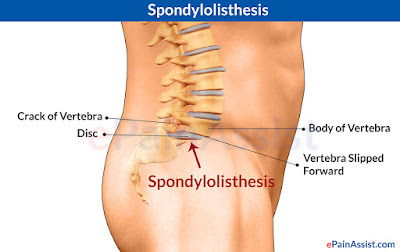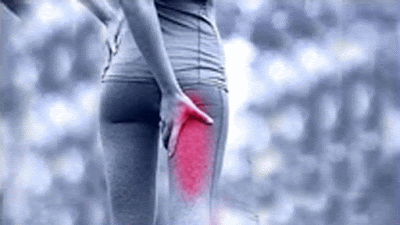Table of Contents
Sciatica cause - as you know, several lumbar spine, also known as lower back, disorders can cause sciatica. It's often described as mild to intense pain in the left or right leg. Sciatica is caused by compression of one or more of the 5 sets of nerve roots in the lower back. Sometimes doctors call sciatica a radiculopathy. Radiculopathy is a medical term used to describe pain, numbness, tingling, and weakness in the arms or legs caused by a nerve root problem. If the nerve problem is in the neck, it is called a cervical radiculopathy. However, since sciatica affects the low back, it is called a lumbar radiculopathy.You can learn more information about how to Cure Back Pain and Sciatica Naturally at here.
Sciatica cause #1: Lumbar Bulging Disc or Herniated Disc
The 6 most common are:- a bulging or herniated disc
- lumbar spinal stenosis
- spondylolisthesis
- trauma
- piriformis syndrome
- spinal tumors
There are many terms used to describe spinal disc pathology and associated pain, such as "herniated disc","pinched nerve"and "bulging disc" and all are used differently and, at times, interchangeably.
The medical diagnosis identifies the actual cause of the patient’s back pain, leg pain and other symptoms.
 |
Lumbar Bulging Disc or Herniated Disc
|
Lumbar herniated discs are a widespread medical problem, most often affecting people age 35 to 50.
Disc herniation symptoms usually start for no apparent reason. Or they may occur when a person lifts something heavy and/or twists the lower back, motions that put added stress on the discs.
The consequences of a herniated disc are worse. Not only does the herniated disc cause direct compression of the nerve root against the interior of the bony spinal canal, but the disc material itself also contains an acidic, chemical irritant (hyaluronic acid) that causes nerve inflammation. In both cases, nerve compression and irritation cause inflammation and pain, often leading to extremity numbness, tingling, and muscle weakness.
Sciatica cause #2: Lumbar spinal stenosis
A common cause of low back and leg pain is lumbar spinal stenosis. As we age, our spines change. These normal wear-and-tear effects of aging can lead to narrowing of the spinal canal. This condition is called spinal stenosis.Spinal stenosis is a nerve compression disorder most often affecting older adults. Spinal stenosis occurs when the space around the spinal cord narrows. This puts pressure on the spinal cord and the spinal nerve roots, and may cause pain, numbness, or weakness in the legs.
 |
| Lumbar sipnal stenosis |
Symptoms may include:
- Numbness, weakness, cramping, or pain in the legs, feet, or buttocks. These symptoms get worse when you walk, stand straight, or lean backward. The pain gets better when you sit down or lean forward.
- Stiffness in the legs and thighs.
- Low back pain.
- In severe cases, loss of bladder and bowel control.
Sciatica cause #3: Spondylolisthesis
Spondylolisthesis is a disorder that most often affects the lumbar spine. It is characterized by one vertebra slipping forward over an adjacent vertebra. When a vertebra slips and is displaced, spinal nerve root compression occurs and often causes sciatic leg pain. Spondylolisthesis is categorized as developmental (found at birth, develops during childhood) or acquired from spinal degeneration, trauma or physical stress (eg, lifting weights). |
| Causes of Pain in the Lumbar Spine |
Sometimes when a vertebra slips out of place, you may have no symptoms at all or no symptoms until years later. Then, you may have pain in your low back or buttock. Muscles in your leg may feel tight or weak. .You may even limp
Sciatica cause #4: Trauma
Sciatica can result from direct nerve compression caused by external forces to the lumbar or sacral spinal nerve roots. Examples include motor vehicle accidents, falling down, football and other sports. The impact may injure the nerves or, occasionally, fragments of broken bone may compress the nerves. |
| trauma caused by sports activities |
Sciatica cause #5: The piriformis syndrome
Piriformis syndrome is named for the piriformis muscle and the pain caused when the muscle irritates the sciatic nerve. The piriformis muscle is located in the lower part of the spine, connects to the thighbone, and assists in hip rotation. The sciatic nerve runs beneath the piriformis muscle. Piriformis syndrome develops when muscle spasms develop in the piriformis muscle thereby compressing the sciatic nerve. |
Sciatica Cause : The Piriformis Syndrome
|
Until this moment, there is no simple diagnostic test for piriformis syndrome causing irritation of the sciatic nerve. The condition is primarily diagnosed on the basis of the patient’s symptoms and on a physical exam, and after excluding other possible causes of the patient’s pain.
Symptoms of piriformis syndrome often become worse after prolonged sitting, walking or running, and may feel better after lying down on the back.
Most commonly, patients describe acute tenderness in the buttock and sciatica-like pain down the back of the thigh, calf and foot.
Typical piriformis syndrome symptoms may include:
- A dull ache in the buttock
- Pain down the back of the thigh, calf and foot (sciatica)
- Pain when walking up stairs or inclines
- Increased pain after prolonged sitting
- Reduced range of motion of the hip joint

Sciatica-like pain down the back of the thigh, calf and foot.
Sciatica cause #6: Spinal tumors
People may have weak muscles, lose sensation in particular areas of the body, or become unable to control bowel and bladder function, it is due to the appearance of tumors.Tumors that affect the bones of the spine (vertebrae) are known as vertebral tumors. Spinal tumors are abnormal growths that are either benign or cancerous (malignant). Fortunately, spinal tumors are rare. However, when a spinal tumor develops in the lumbar region, there is a risk for sciatica to develop as a result of nerve compression.
Usually these tumors are benign and slow growing. However, they can cause symptoms of pain and weakness.
Some common spinal cancer symptoms include pain, numbness, weakness and difficulty with urination.
The symptoms of spinal cancer may occur very slowly. Other times, they occur quickly, even over a matter of hours or days. Metastatic spinal tumors, which have spread to the spine from another location in the body, often progress quickly.
 |
Sciatica Cause: Spinal Tumors |
- Pain in the neck or back, followed by neurological problems (such as weakness or numbness of the arms or legs or a change in normal bowel or bladder habits) is most common
- Focal spine pain that is worse in the morning
- Pain that is severe when there is direct manipulation or compression of the affected area of the spine
- Pain that does not diminish with rest, and pain that may be worse at night than during the day
- Back pain along with constitutional symptoms, such as loss of appetite, unplanned weight loss, nausea, vomiting, or fever, chills or shakes.
Spinal tumors or growths of any kind can lead to pain, neurological problems and sometimes paralysis. Whether cancerous or not, a spinal tumor can be life-threatening and cause permanent disability.
Treatment for a spinal tumor may include surgery, radiation therapy, chemotherapy or other medications.
If you think you have sciatica, call your doctor. The first step toward relieving pain is a proper diagnosis.
You can also learn how to treat natural sciatica disease at link below.
For more information about how to Cure Back Pain and Sciatica Naturally, click here.


No comments:
Post a Comment